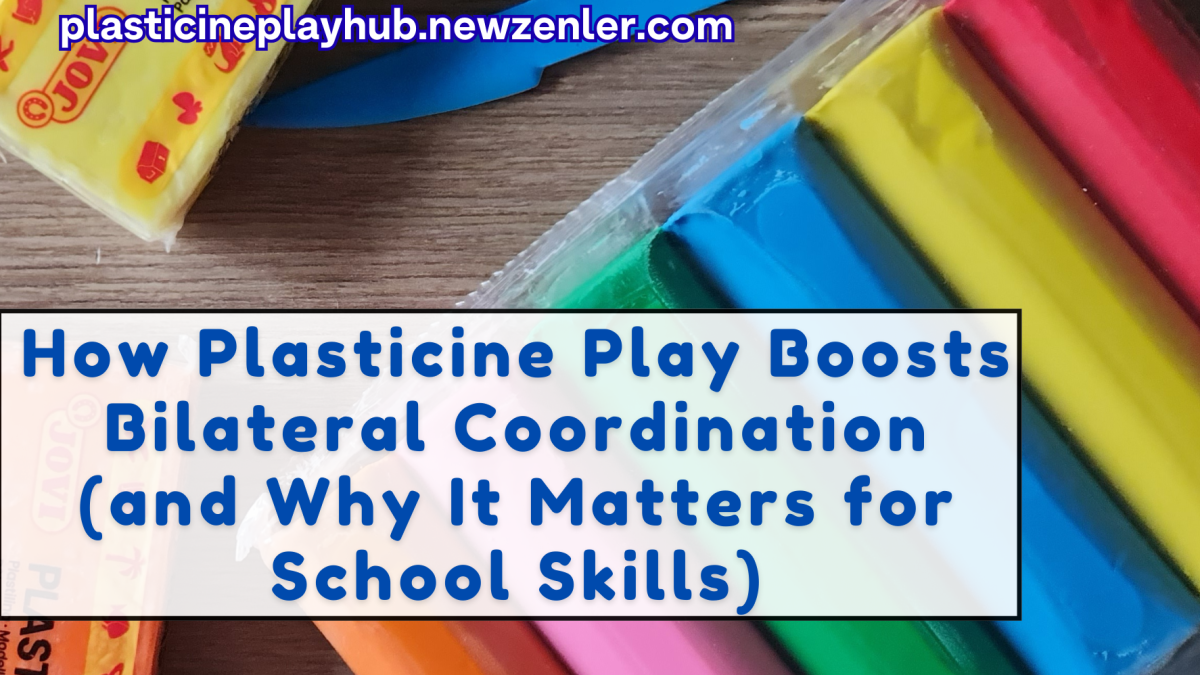How Plasticine Play Boosts Bilateral Coordination (and Why It Matters for School Skills)

Learn how simple plasticine activities improve bilateral coordination, helping kids perform everyday school tasks with ease and confidence.
Imagine trying to cut paper with one hand. Or tie your shoes while keeping your other hand in your pocket.
That’s what life feels like for a child who hasn’t mastered bilateral coordination — the ability to use both sides of the body in a smooth, coordinated way.
And here’s the surprising truth:
Many kids who struggle with handwriting, sports, or self-care tasks (like buttoning shirts) aren’t lacking “effort” — they’re missing this key building block.
The good news? Plasticine play is one of the easiest, most enjoyable ways to strengthen bilateral coordination — without turning it into a chore.
What Exactly Is Bilateral Coordination?
Bilateral coordination is the teamwork between both hands (and by extension, both sides of the brain). It’s what allows kids to:
- Stabilize paper with one hand while writing with the other
- Hold a jar steady while twisting the lid off
- Use scissors
- Catch and throw a ball
These aren’t just motor skills — they’re foundations for independence, learning, and confidence.
When kids haven’t developed strong bilateral coordination, you might see signs like:
- Avoiding cutting or craft projects
- Awkward pencil grip
- Difficulty dressing themselves
- Struggling with sports or playground games
Why Plasticine Is Perfect for Bilateral Skill-Building
Plasticine play naturally requires both hands to work together.
Think about it:
- One hand holds the material steady
- The other shapes, rolls, or presses it
This repetitive back-and-forth sends signals between the brain’s left and right hemispheres, strengthening the “communication highway” (the corpus callosum).
That’s why therapists love using it — it’s functional skill-building disguised as fun.
A Day in the Life: How Bilateral Skills Show Up Everywhere
Let’s take “Leo,” age 6.
Before plasticine play was introduced:
- He avoided puzzles because the pieces “were too hard to push in.”
- He’d hold scissors awkwardly and give up quickly.
- Sports day? He’d rather sit and watch.
After just a few weeks of targeted plasticine activities — rolling, flattening, and cutting with child-safe tools — Leo’s coordination visibly improved. He could:
- Cut shapes confidently
- Build Lego towers without them collapsing
- Join in playground ball games without hesitation
It wasn’t magic. It was consistent, playful bilateral training that carried over into every aspect of his day.
Simple Plasticine Bilateral Activities to Try at Home
Here are three that are both effective and fun:
- The Pancake Press
- Roll a ball of plasticine.
- Use one hand to hold it still, the other to flatten it into a pancake.
- Switch hands so each gets equal “training.”
- The Rope Roll
- Roll plasticine into long ropes using both hands moving in opposite directions.
- Challenge your child to make ropes as even as possible.
- Two-Handed Cut
- Provide a small child-safe knife or dough cutter.
- One hand holds the plasticine steady while the other cuts.
Each of these builds muscle strength, hand stability, and that all-important brain-hand coordination.
The Link Between Bilateral Coordination and Academic Success
Here’s where this gets exciting for school readiness:
- Handwriting: One hand needs to keep the page steady while the other writes. Without coordination, writing feels tiring and messy.
- Math activities: Manipulatives (blocks, counters) require holding and placing pieces at the same time.
- Art projects: Cutting, gluing, and drawing all rely on two-hand cooperation.
We looked at how plasticine boosts focus. Now you can see how these focus gains are multiplied when both hands are working in harmony.
Why Worksheets Alone Can’t Teach This
You can give a child endless tracing worksheets, but if they lack bilateral control, they’ll struggle to complete them neatly — or at all.
Plasticine bridges that gap by strengthening the physical foundation needed for worksheet-based tasks. Once the body is ready, the mind follows.
How the Plasticine Play Weather Series Makes This Easy
Instead of hunting for random activities online, the Plasticine Play Weather Series provides ready-to-use, themed worksheets designed to:
- Engage both hands equally
- Encourage creativity while training coordination
- Build fine motor skills alongside focus and confidence
👉 Have a sneak peek at the Plasticine Play Weather Series Course and see how simple it can be to turn a few minutes of daily play into lifelong coordination skills.
From Skills to Confidence
When bilateral coordination improves, kids notice. Suddenly:
- Zippers are easy
- Sports are fun
- Classroom tasks feel doable
And that confidence boost? It spills over into friendships, self-esteem, and the willingness to try new things.
The journey doesn’t stop here. Once bilateral coordination is strong, the next step is applying it to specific learning goals.
That’s exactly what we’ll explore in the next post — How 5 Minutes of Plasticine Play Can Boost Your Child’s Writing Readiness — where you’ll see how to turn a tiny daily habit into a powerful school-prep tool.
Categories: : fine motor development, school readiness, tactile development
 Tamara Mamedova
Tamara Mamedova 